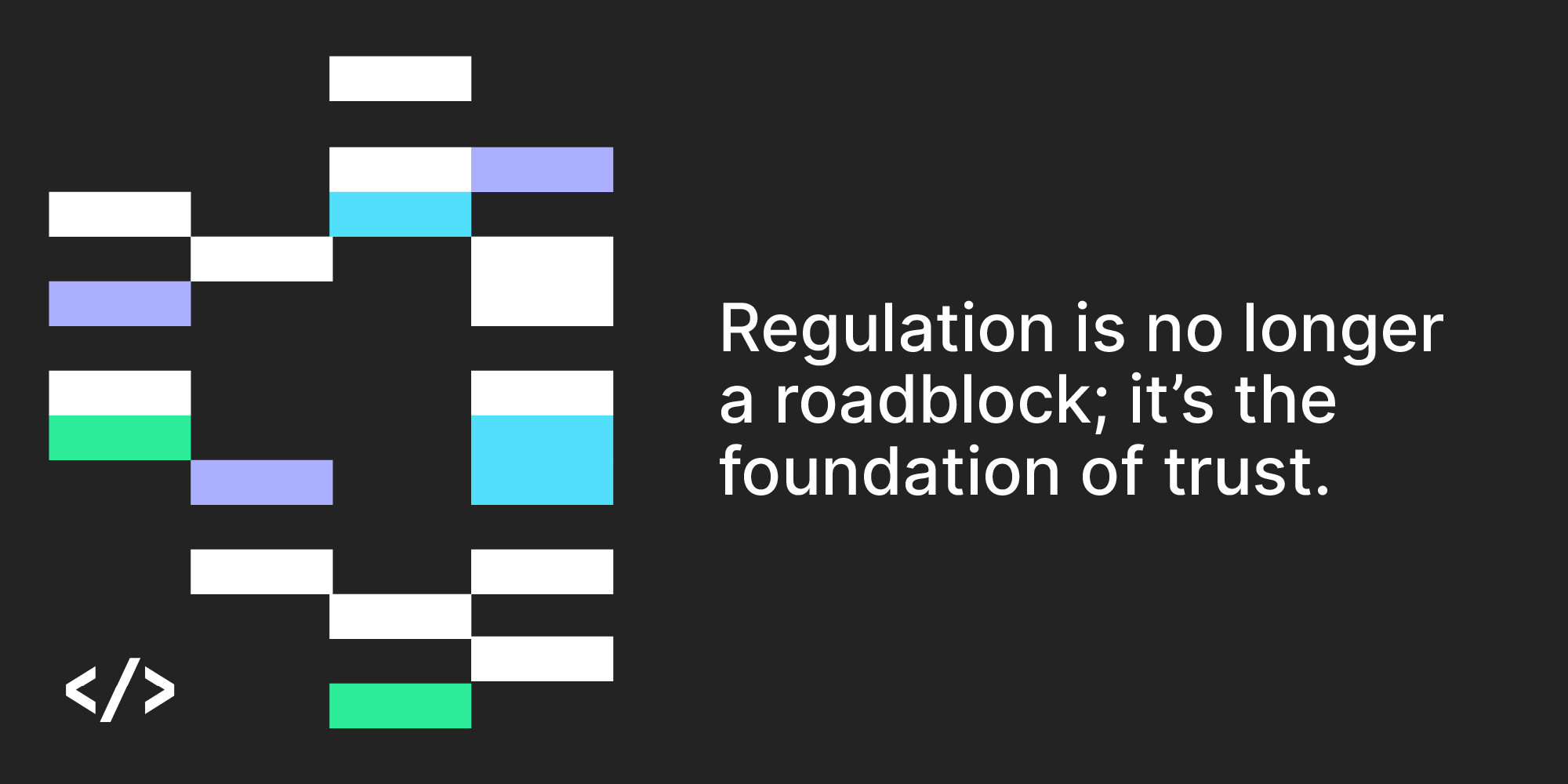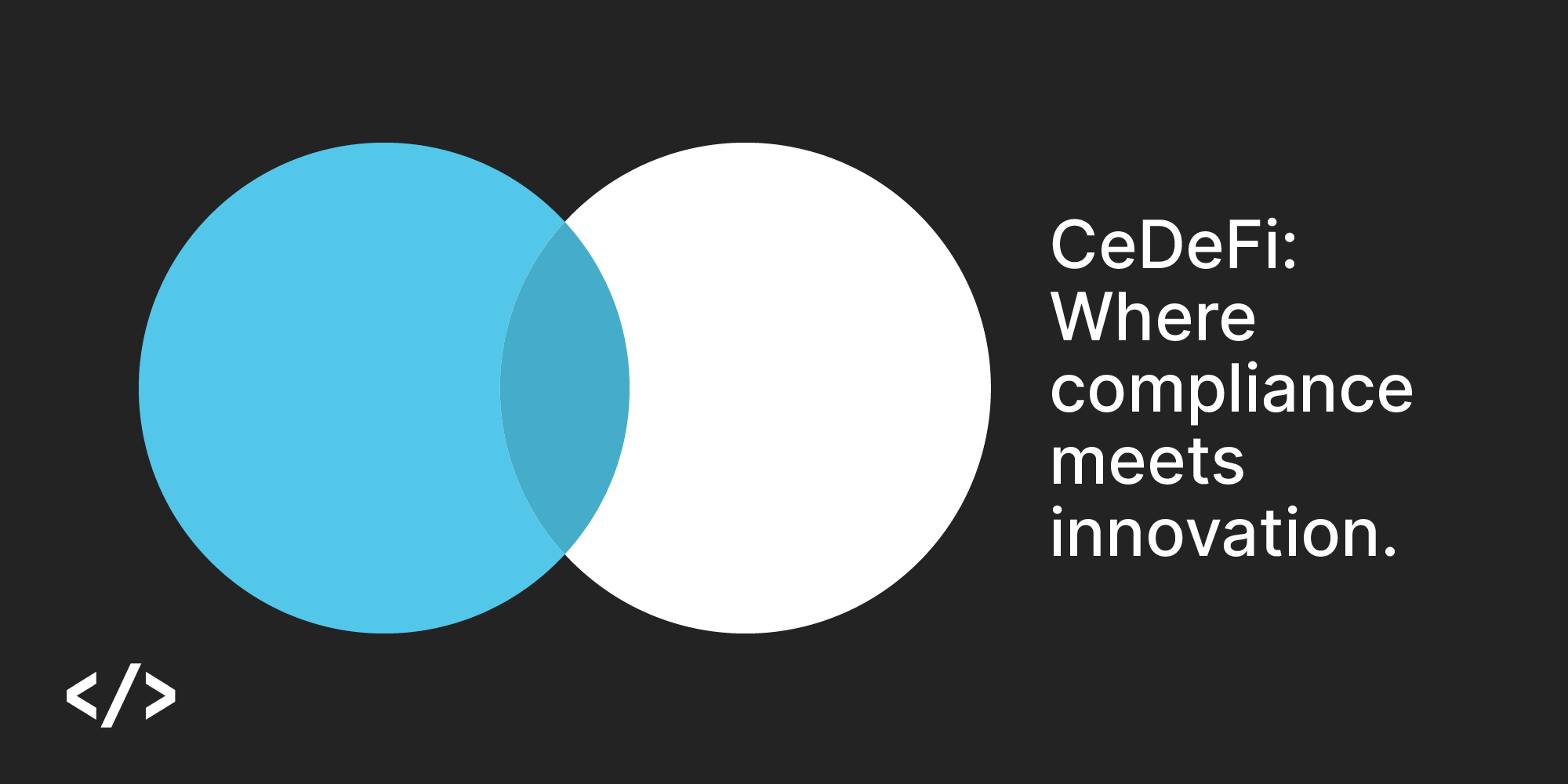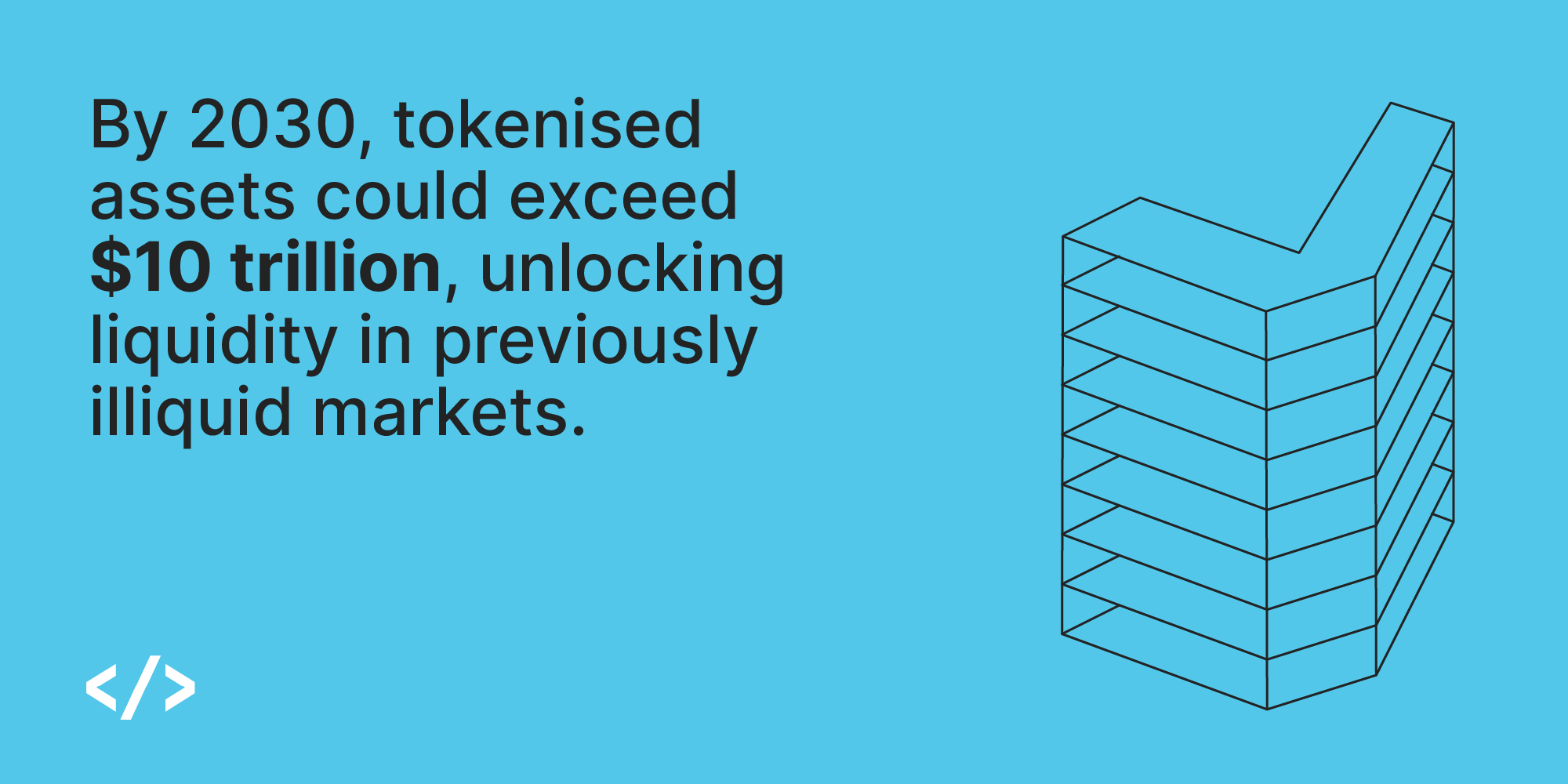Bitpanda Tech • 6 min read

By Bitpanda
18.11.2025
In 2025, the blockchain market is set to reach $49 billion (The Business Research Company), with much of this growth driven by the crypto industry. The convergence of crypto and blockchain technology with traditional finance (TradFi) can no longer be ignored. This merging has injected billions of dollars into the market, transforming digital assets from a speculative niche into a legitimate, strategic asset class.
The maturation of blockchain technology, combined with growing regulatory clarity, has accelerated its adoption across major financial institutions. With 88% of global banks either announcing or exploring blockchain-based services, the shift towards modernising financial infrastructure is clear.
But what does the institutionalisation of crypto actually look like today? Why are traditional and decentralised finance (DeFi) infrastructures beginning to overlap, and what should leaders focus on as crypto enters its regulated, institutional phase?

There is a new era of liquidity, regulation, and technological maturity that is blurring the lines between TradFi and decentralised finance.
Institutional crypto adoption has moved far beyond hedge funds buying Bitcoin. It now includes licensed custody and trading platforms, AML/KYC-compliant DeFi protocols, and tokenised real-world assets (RWAs). Major banks are also entering the market, experimenting with stablecoins and blockchain-based settlement systems that offer speed, transparency, and cost efficiency.
Recent endorsements from financial giants such as BlackRock, Fidelity, and JPMorgan through spot Bitcoin and Ethereum ETFs have propelled digital assets into the mainstream. Custodians like BNY Mellon are expanding regulated crypto custody, while projects such as JPMorgan’s Onyx and Société Générale’s EURCV stablecoin demonstrate how blockchain infrastructure is being embedded into global banking operations.
This institutionalisation of digital assets represents a systemic integration of blockchain into the regulated financial ecosystem. Crypto is evolving from being an asset class to an infrastructure layer underpinning modern finance. For instance, Stablecoins could represent up to 10% of the global money supply by 2034, serving as the bridge between TradFi efficiency and DeFi innovation.
Institutionalisation is a mutual transformation as crypto adapts to regulatory and operational frameworks, TradFi evolves to harness blockchain’s technological advantages. The result is not convergence for its own sake, but the creation of a hybrid financial infrastructure built for scale, security, and innovation.
Recent years have been transformative for institutional engagement with digital assets. The SEC’s approval of 10 spot Bitcoin ETFs in early 2024 marked a defining moment. Within months, Bitcoin ETFs accumulated over $100 billion in assets under management, cementing institutional crypto adoption as a key driver of market liquidity.
Ethereum ETFs soon followed, further reinforcing institutional confidence. Major banks and asset managers like BNY Mellon began offering regulated crypto custody, aligning with new SEC and MiCA frameworks to provide secure access for clients.
TradFi’s embrace of crypto is not driven by speculation but by strategic modernisation. Institutions see blockchain as a tool to:
Increase operational efficiency through instant settlement and reduced reconciliation costs.
Unlock new revenue streams via tokenisation and digital asset products.
Meet client demand for regulated exposure to crypto markets.
From BlackRock’s tokenised money market fund to Deutsche Bank’s digital custody partnerships, the evidence is clear: digital asset infrastructure is no longer peripheral as it’s becoming core to institutional strategy.
Historically, the uncertainty surrounding regulation was one of the biggest obstacles to institutional crypto adoption. Today, it’s becoming a catalyst for growth.
The introduction of MiCA (Markets in Crypto-Assets Regulation) in the EU has set a global benchmark, offering legal clarity for service providers and investors alike. In parallel, the Basel III framework and SEC ETF approvals have brought much-needed standardisation and legitimacy to the sector.

These developments have transformed the landscape, reducing volatility and enabling regulated access to digital assets through licensed platforms and compliant custody solutions. Institutions can now engage in tokenisation and digital asset trading with confidence, knowing that risk, capital, and disclosure requirements are aligned with global standards.
Now, regulation is no longer a roadblock; it’s the foundation of trust underpinning institutional participation in the digital economy.

While TradFi is adopting blockchain’s transparency and automation, DeFi is borrowing from the risk management and compliance disciplines of traditional finance.
Protocols like Aave Arc now offer permissioned liquidity pools with KYC verification, catering specifically to institutional participants. Governance mechanisms, reporting standards, and capital adequacy models, long hallmarks of TradFi, are being increasingly replicated within DeFi ecosystems.
This hybridisation is producing a new model often referred to as CeDeFi (centralised and decentralised financial systems), where decentralised technologies operate within regulated frameworks. It allows institutions to enjoy DeFi’s efficiency while retaining security and accountability through regulated crypto custody and audited infrastructure.
Real-world examples reinforce this convergence:
JPMorgan’s DeFi-based collateral settlement using tokenised assets.
BlackRock’s BUIDL fund, which is a tokenised real-world asset offering.
Franklin Templeton’s OnChain mutual fund, bridging DeFi transparency with traditional oversight.
DeFi is no longer on the outside looking in; it’s becoming an essential component of the institutional-grade digital asset infrastructure powering the next phase of financial innovation.

The convergence of crypto and TradFi is no longer a theoretical exercise; it’s a strategic reality reshaping the future of finance.
In the short term, the continued expansion of tokenised real-world assets (RWAs), stablecoin payment rails, and regulated custody will drive institutional engagement. By 2030, tokenised assets could exceed $10 trillion, unlocking liquidity in previously illiquid markets.
Looking further ahead, the global financial ecosystem will become increasingly hybridised, blending blockchain’s transparency and programmability with TradFi’s compliance and scale. We can expect:
Greater integration between banks and DeFi protocols.
More cross-chain liquidity and interoperability between digital asset networks.
The rise of programmable finance, where smart contracts automate settlements and reporting.
For institutional leaders, this moment represents a critical juncture. Strategic considerations include:
Partnering with regulated digital asset infrastructure providers.
Exploring tokenisation pilots for bonds, funds, and alternative assets.
Building internal expertise around compliance, smart contracts, and DeFi risk frameworks.
The institutionalisation of crypto marks a structural transformation in how global finance operates. TradFi and DeFi are no longer opposing forces, rather complementary layers of a unified financial ecosystem.
For financial institutions, this convergence brings greater efficiency, accessibility, and diversification. The opportunity lies in understanding how to navigate this transition by combining TradFi’s credibility with DeFi’s innovation to deliver secure, scalable, and compliant solutions.
As blockchain technology becomes embedded in the very core of capital markets, the message is clear:
The institutions that embrace regulated digital asset infrastructure today will define the next chapter of global finance.
Discover how Bitpanda Technology Solutions enables financial institutions to participate in the future of regulated digital asset infrastructure.
Get in touch today to learn more.
Disclaimer
This article is distributed for informational purposes, and it is not to be construed as an offer or recommendation. It does not constitute and cannot replace investment advice.
Bitpanda does not make any representations or warranties as to the accuracy and completeness of any information contained herein.
Investing carries risks. You could lose all the money you invest.
We use cookies to optimise our services. Learn more
The information we collect is used by us as part of our EU-wide activities. Cookie settings
As the name would suggest, some cookies on our website are essential. They are necessary to remember your settings when using Bitpanda, (such as privacy or language settings), to protect the platform from attacks, or simply to stay logged in after you originally log in. You have the option to refuse, block or delete them, but this will significantly affect your experience using the website and not all our services will be available to you.
We use such cookies and similar technologies to collect information as users browse our website to help us better understand how it is used and then improve our services accordingly. It also helps us measure the overall performance of our website. We receive the date that this generates on an aggregated and anonymous basis. Blocking these cookies and tools does not affect the way our services work, but it does make it much harder for us to improve your experience.
These cookies are used to provide you with adverts relevant to Bitpanda. The tools for this are usually provided by third parties. With the help of these cookies and such third parties, we can ensure for example, that you don’t see the same ad more than once and that the advertisements are tailored to your interests. We can also use these technologies to measure the success of our marketing campaigns. Blocking these cookies and similar technologies does not generally affect the way our services work. Please note, however, that while you’ll still see advertisements about Bitpanda on websites, the adverts will no longer be personalised for you.